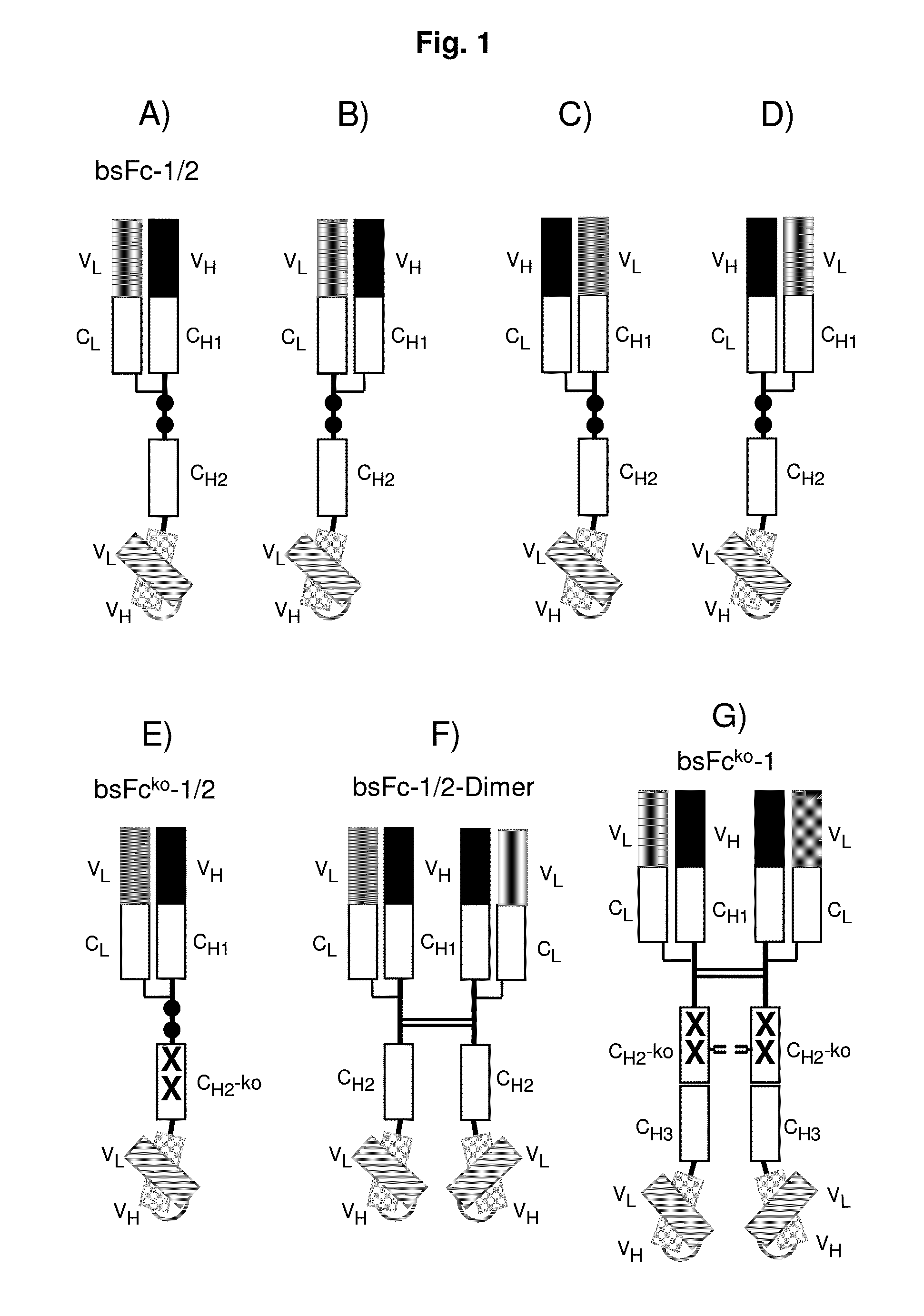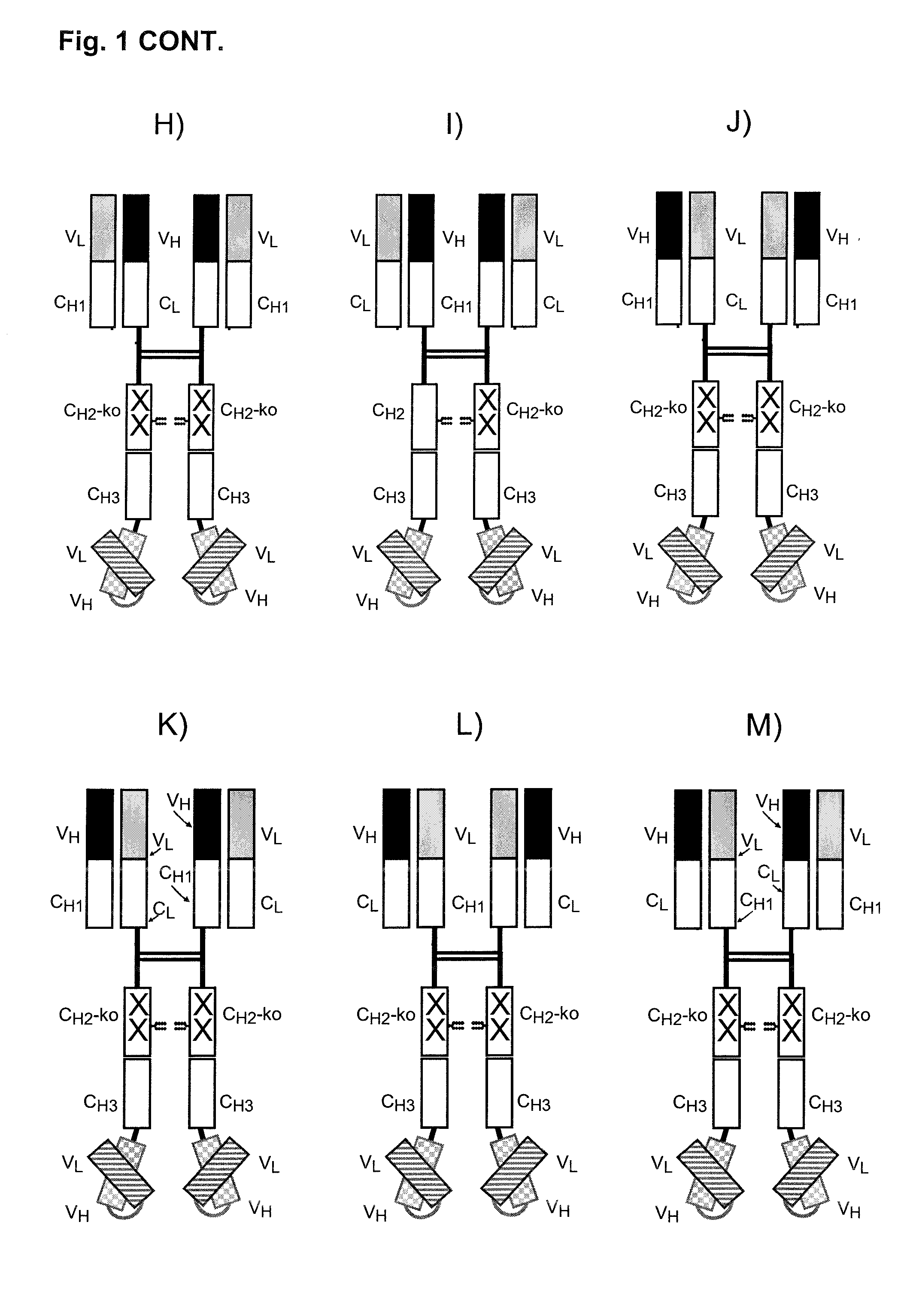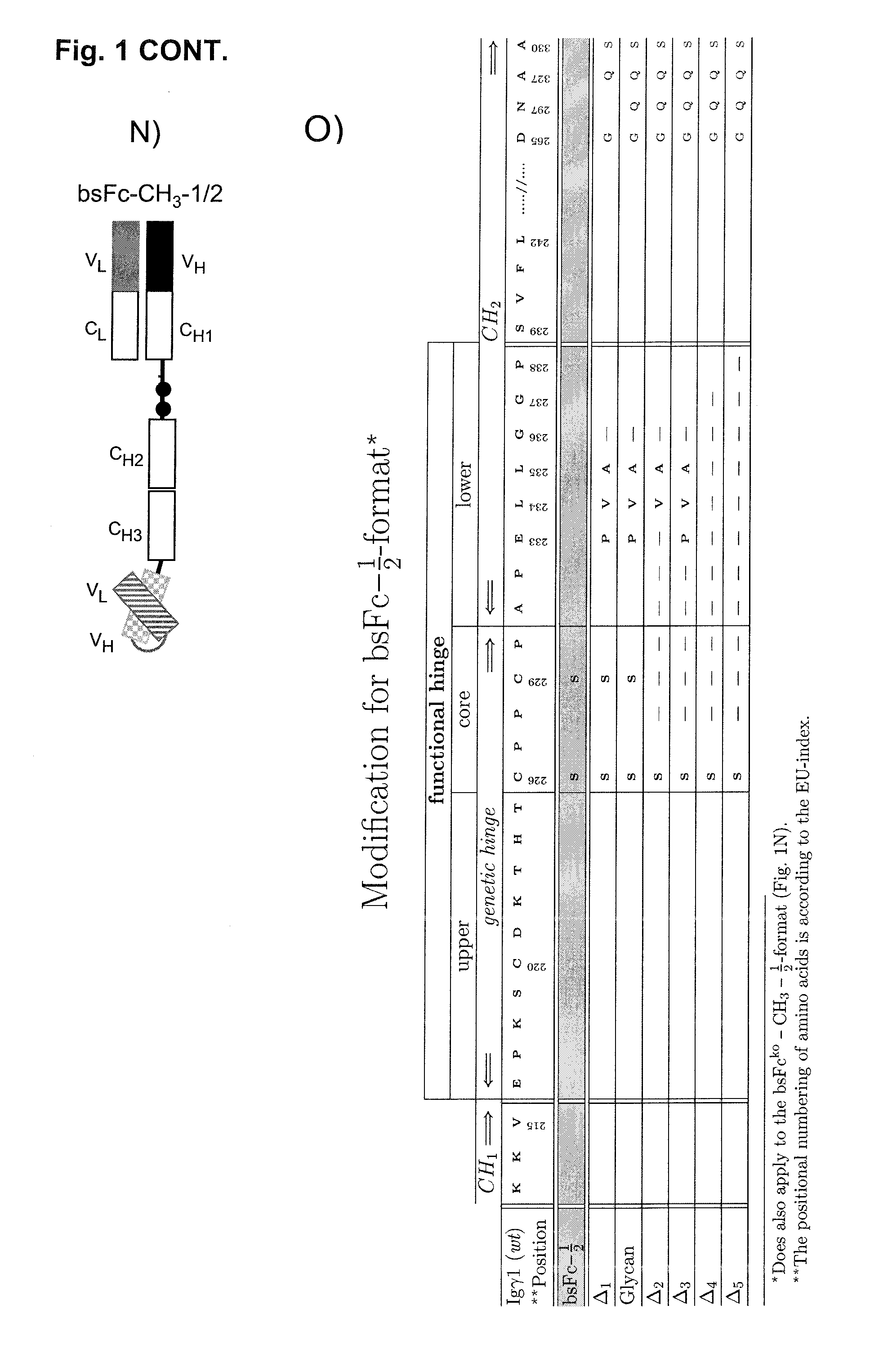Bispecific antibody molecule
- Summary
- Abstract
- Description
- Claims
- Application Information
AI Technical Summary
Benefits of technology
Problems solved by technology
Method used
Image
Examples
example i
[0160]A bispecific Fc-attenuated bivalent molecule, also designated to be of the bsFcko-1 / 2-format, with tumour×CD3 specificity, as schematically depicted in FIG. 1E, was generated. Modifications of amino acids of the hinge region and of the CH2 domain were introduced as shown in FIG. 1O. Bispecific Fc-attenuated tetravalent molecules, also designated to be of the bsFcko-1-format, with tumour×CD3 specificity, as schematically depicted in FIG. 1G, were generated. Modifications of amino acids of the hinge region and of the CH2 domain were introduced as shown in FIG. 1P.
[0161]Cloning and amplification of plasmids was carried out using Escherichia coli DH5α (Invitrogen, Karlsruhe, Germany). The build-up of the respective vectors is depicted in FIG. 2.
[0162]Cotransfection of expression vectors encoding main and smaller chains, which can also be referred to as heavy and light chains, of indicated specificities was done in Sp2 / 0 plasmocytoma cells, obtained from the American Type Culture C...
example ii
[0164]Immunoglobulin V regions were combined with the desired constant C regions in an expression vector. The cloning procedure indicated here allows the introduction of complete Ig V regions and their expression in lymphoid cells without any alterations of their amino acid sequence. To this end, the nucleotide sequence of a VDJ and VJ fragment of a monospecific antibody was used to design primer pairs (C C′; D D′; Table 1). The reamplified DNA fragments of the V segments were digested (VJ directly and VDJ after reamplification with primer pair E E′ Table 1) with appropriate restriction nucleases (summarized in Table 1) and then ligated into the expression vectors. Alternatively, the V domains were synthezised as DNA fragments at GeneArt, Regensburg, Germany. This method was used for genes coding for the V regions of the antibody directed to EGFR (clone C225). The vectors (FIG. 2) contain human heavy and human light constant region genes. Thus, insertion of the amplified and digeste...
example iii
[0170]T cell activation by the two antibody formats of Example I, the bsFcko-1 / 2-format and the bsFcko-1-format, with and without FLT3 / CD19 positive REH cells was determined. Data are shown in FIG. 3. The bispecific antibody molecules used had the FLT3 binding site (first binding site) of clone 4G8 and a CD3 binding site (second binding site) of clone UCHT1. The “bsFcko-1 / 2-format” molecule was comprised of the chains of SEQ ID NO: 1 and SEQ ID NO: 6) and the “bsFcko-1-format” molecule was comprised of the chains of SEQ ID NO: 1 and SEQ ID NO: 26. The bispecific antibody molecule that binds CSPG4 and CD3 was in the “bsFcko-1 / 2 format” and was comprised of the chains of SEQ ID NO: 3 and SEQ ID NO: 18. In addition a bispecific antibody molecule in the “bsFcko-1 / 2 format” binding CD19 and TCRα / β comprised of the chains of SEQ ID NO: 4 and SEQ ID NO: 15 was used.[0171]A) Human mononuclear cells (PBMCs) were obtained from peripheral blood of healthy donors and isolated using density grad...
PUM
| Property | Measurement | Unit |
|---|---|---|
| Composition | aaaaa | aaaaa |
Abstract
Description
Claims
Application Information
 Login to View More
Login to View More - R&D
- Intellectual Property
- Life Sciences
- Materials
- Tech Scout
- Unparalleled Data Quality
- Higher Quality Content
- 60% Fewer Hallucinations
Browse by: Latest US Patents, China's latest patents, Technical Efficacy Thesaurus, Application Domain, Technology Topic, Popular Technical Reports.
© 2025 PatSnap. All rights reserved.Legal|Privacy policy|Modern Slavery Act Transparency Statement|Sitemap|About US| Contact US: help@patsnap.com



